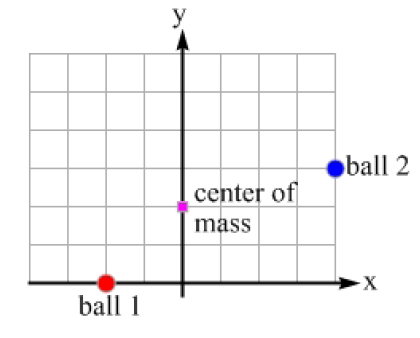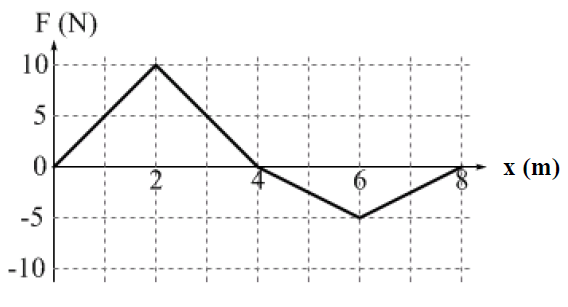
Homework problems
1) A 59-kg woman and a 71-kg man sit on a seesaw, 3.5 m long. Where is their center of mass?
2) Mount Fuji has approximately the shape of a cone. The half-angle at the apex of this cone is 65 degrees, and the height of the apex is 3800 m. At what height is the center of mass? Assume that the material in Mount Fuji has uniform density.
3) A fisherman in a boat catches a great white shark with a harpoon. The shark struggles for a while and then becomes limp when at a distance of 300 m from the boat. The fisherman pulls the shark by the rope attached to the harpoon. During this operation, the boat (initially at rest) moves 45 m in the direction of the shark. The mass of the boat is 5400 kg. What is the mass of the shark? Pretend that the water exerts no friction.
Solving problems
1) A 60 kg man and his 40 kg dog are sitting together at the left end of a boat that is 8.0 m long.The boat’s mass is 100 kg, and we can assume the boat’s center of mass is in the center of theboat. The boat starts out at rest in the middle of a calm lake. Ignore all friction and waterresistance throughout this problem.
2) 
A system consists of three balls at different locationsnear the origin, as shown at right. Ball 1 has a mass of2.0 kg and is located on the x-axis at x1 = –2.0 m; ball 2has an unknown mass and is located at (x2 = +4.0 m,y2 = +3.0 m); ball 3 is somewhere on the y-axis at anunknown location, and it has a mass of 1.0 kg.The coordinates of the center-of-mass of this system are(xCM = 0, yCM = +2.0 m). The squares on the grid measure 1.0 m × 1.0 m.
(a) Calculate the mass of ball 2.
(b) Find the location of ball 3.
(c) Let’s say you can set the mass of ball 3 to be any non-negative value. By adjustingthe mass of ball 3, what range of positions can the center-of-mass of this system occupy?
3) 
When an object with a mass of 2.0 kg passesthrough the origin, its velocity is 4.0 m/s in thepositive x-direction. It is then subjected to a netforce in the x-direction that varies in magnitudeand direction as shown by the graph. Note thatthe graph gives force as a function of position,not force as a function of time.When the force is positive it means the force isdirected in the +x direction. When the force is negative it is directed in the –x direction.
(a) At what location does the object reach its maximum speed? Justify your answer.
(b) What is the maximum speed reached by the object?
(c) What is the object’s kinetic energy when it reaches x = +8 m?
(d)
Материалы на данной страницы взяты из открытых источников либо размещены пользователем в соответствии с договором-офертой сайта. Вы можете сообщить о нарушении.